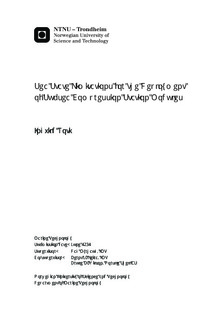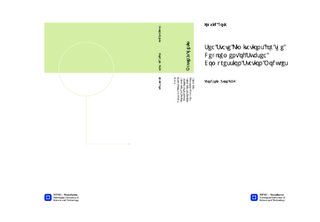| dc.description.abstract | Deployment of a large box structure in many sea states has been investigated. Two deployment methods are compared; crane installation over the side and through moonpool installation. The structure is 12 [m] long, 6 [m] wide and 12 [m] high with a mass of 250 [t]. Normand Subsea is used as installation vessel. Both JONSWAP and Torsethaugen wave spectra are used for crane lowering while only JONSWAP is used for moonpool installation.Splash zone lowering is seen as the most critical stage of the installation because hydrodynamic forces are largest at the surface. Hydrodynamic uplift is assumed limiting for the deployment, i.e slack slings . Slings are the lower part of the lift rigging. The operation limit is that dynamic uplift should not exceed 90 % of the modules static weight. Forces in z-direction are hence most interesting. Minimum wire tension for the lowering is therefore calculated at two time instances; when the module bottom end is at mean water level and when the module is fully submerged with its top end 0.5 [m] below mean water level. These time instances are referred to as time instance 1 and 2 in the report respectively. Design significant wave heights, Hs, are taken from plots of minimum wire tension for different wave peak periods Tp and wave headings. Based on these design Hs values, which equals the operation limits, operability rosettes are plotted. It is seen that wave headings 90⁰ and 120⁰ are most critical with lowest operability for crane installation while wave heading 90⁰ is worst for moonpool deployment.The lowest design Hs for all Tp values considering wave headings 0⁰ ±30⁰ is used as overall operation limit for deployment when weather window statistics are computed. Time instance 1 is worst for crane deployment with resulting forecasted weather operational criterion Hs=2.8 [m]. Time instance 2 is worst for moonpool deployment with forecasted operational criterion Hs=2.5 [m] and Tp ≥ 13.0 [s]. Reference time for deployment, hence the time needed from the weather forecast is issued to the module is landed on the seabed, is 6 hours. Based on reference time and forecasted operation limits weather window statistics are estimated.Moonpool deployment annual operability is 7.24 days, hence 2.0 % of the year, and can naturally not be used. Crane deployment annual operability is 213.22 days, 58.4 % of the year. This is much better but still not very good as it is theoretically desirable to be able to install the module any day year round. | nb_NO |

